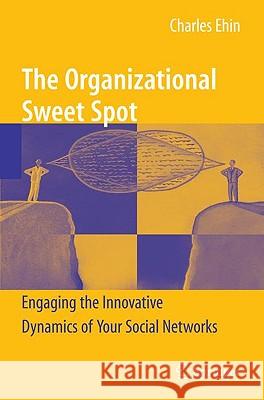The Organizational Sweet Spot: Engaging the Innovative Dynamics of Your Social Networks » książka
The Organizational Sweet Spot: Engaging the Innovative Dynamics of Your Social Networks
ISBN-13: 9780387981932 / Angielski / Twarda / 2009 / 97 str.
According to a recent Gallup Q12 Employee Engagement Survey of the U.S. workforce, approximately 24.7 million workers, or nearly 20 percent of the entire workforce, are "actively disengaged," that is, almost completely disconnected from their jobs. This problem is estimate to cost the U.S. economy over $300 billion annually. In Germany various surveys stipulate that between 70 and 90 percent of employees do not think that their day-to-day work has any impact on their future salary or career opportunities. The obvious question is: "Why are so many workers actively disengaged from their jobs?" And the corollary: "Can anything be done about it?" The challenges may seem insurmountable, especially in an environment of stagnating wages, massive layoffs, rising health care costs, and other factors that contribute to worker alienation and apathy. Moreover, as Charles Ehin argues, the problem of employee disengagement is rooted in a fundamental misalignment between people s instinctive drive to secure their personal and group identities and the ways in which organizational goals and profit motives are executed through formal bureaucracy. The challenge for today s organizations which operate under constantly changing conditions is to narrow this gap, that is, to find the "sweet spot," where the formal and informal elements of the organization overlap. Applying the latest research findings from such fields as psychology, organizational behavior, anthropology, and social network analysis, Ehin examines three key types of social engagements transactions, conversations, and relationships and how they influence organizational dynamics. He argues that a viable organization cannot be entirely rule-bound or managed by routine. While objectives and policies must be clearly articulated, leaders must also acknowledge that such essential intangibles as innovation, knowledge sharing, and motivation take place outside the formal structure. This book presents practical tools for channeling these creative and positive impulses toward collective goals, in order to create organizations that are highly adaptive and creative, which, in turn, engage their employees and strive for exceptional performance."











